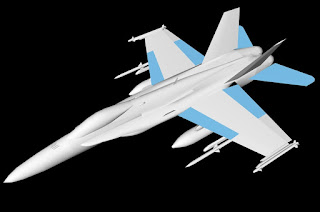Since January 1st, 2017 - the Swiss Air Force is on permanent 15 mins Alert from 0800 to 1800h. Until 2020, the permanence will be increased to 24/365 duty.
This week, from November 20th to 21st, the Air Force tested a permanent QRA for 36 hours.
36 Stunden Luftpolizeidienst Bereitschaft erfolgreich getestet
Bern, 23.11.2017 - Die Einsatzbereitschaft im Luftpolizeidienst wird bis Ende 2020 kontinuierlich ausgebaut. Ab dann werden rund um die Uhr während 365 Tagen zwei bewaffnete Flugzeuge einsatzbereit sein. Seit Januar 2017 ist die Bereitschaft auf 365 Tage – also auch an Wochenenden und Feiertagen – von 08.00 bis 18.00 Uhr erweitert worden. Vom 20.-21.11.2017 hat die Luftwaffe aber eine längere Bereitschaft im Luftpolizeidienst angeordnet.
In der aktuellen Phase der Umsetzung des Projektes Luftpolizeidienst 24 (LP24) zur Erreichung einer permanenten Bereitschaft an 365 Tagen während 24 Stunden bis Ende 2020 ist die normale Bereitschaft von 08:00 bis 18:00 an 365 Tagen. Vom letzten Montag, 20.11.2017, bis Dienstag, 21.11.2017, wurde eine Bereitschaft auch über die Nacht angeordnet. Insgesamt ergab sich eine ununterbrochene Bereitschaft von 36 Stunden.
Die Luftwaffe verfolgt damit zwei Ziele: Erstens wird immer wieder auf zufälliger Basis eine erhöhte Bereitschaft angeordnet, um unberechenbar zu bleiben, zweitens sollen mit diesen Phasen erhöhter Bereitschaft wertvolle Erkenntnisse für die Umsetzung der nächsten Phasen gewonnen werden. Ab dem 01.01.2019 wird die Bereitschaft dann auf die Zeiten von 06:00 bis 22:00 an 365 Tagen erhöht. Ende 2020 soll die Luftwaffe rund um die Uhr während 365 Tagen einsatzbereit sein.
Erhöhte Sicherheit im Luftraum
Die aktive Luftraumüberwachung ist bereits seit 2005 verwirklicht. Dass diese wertvoll ist, hat sich erst kürzlich wieder eindrücklich gezeigt. So musste am 31. Oktober ein ziviles Passagierflugzeug über der Schweiz einen sogenannten Not-Sinkflug einleiten. Dabei muss ein Flugzeug aus technischen Gründen, beispielsweise weil es Probleme mit der Druckkabine geben könnte, schnell die aktuelle Reiseflughöhe verlassen und sinken. Die Einsatzzentrale Luftverteidigung hat diesen Sinkflug aktiv beobachtet. Auf einer Höhe von ungefähr 3500 Meter über Meer fielen über dem Raum Zürich alle Daten des Transponders aus. Der Transponder erlaubt es der zivilen Flugsicherung, ein Flugzeug auf ihren Radarschirmen darzustellen. Bei einem Ausfall des Transponders "verschwindet" dieses Flugzeug von den Radarschirmen. Ab diesem Zeitpunkt hatte nur noch die militärisch Flugsicherung Radarkontakt mit dem Flugzeug. Dies weil militärische Radars auch Flugzeuge erfasst und darstellt, welche nicht aktiv Signale aussenden. Dadurch war die militärische Flugsicherung jederzeit in der Lage, der zivilen Flugsicherung die Lage dieses Flugzeuges mitzuteilen. Durch diese Zusammenarbeit erhöht sich die Sicherheit im Luftraum. Gleichzeitig wurde auch die Deutsche Luftwaffe informiert, da der geplante Flugweg nach Deutschland führte. Im Deutschen Luftraum hat sich die Situation dann geklärt, das Transpondersignal konnte empfangen werden und das Flugzeug wurde zur Landung nach München umgeleitet.
Das Projekt Luftpolizeidienst 24 geht auf eine Motion von alt Ständerat Hans Hess (FDP/OW) aus dem Jahr 2009 zurück. Darin forderte er eine erhöhte Bereitschaft im Luftpolizeidienst auch ausserhalb der normalen Arbeitszeiten. Mit LP24 wird nun in vier Schritten eine permanente Einsatzbereitschaft von zwei bewaffneten Kampfjets innert höchstens 15 Minuten erreicht.
Adresse für Rückfragen
Delphine Allemand
Armeesprecherin
058 463 22 58
Armeesprecherin
058 463 22 58
Herausgeber
Eidgenössisches Departement für Verteidigung, Bevölkerungsschutz und Sport
http://www.vbs.admin.ch
Gruppe Verteidigung
http://www.vtg.admin.ch
http://www.vbs.admin.ch
Gruppe Verteidigung
http://www.vtg.admin.ch










